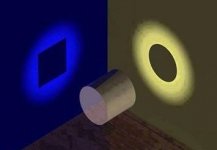You are using an out of date browser. It may not display this or other websites correctly.
You should upgrade or use an alternative browser.
You should upgrade or use an alternative browser.
Natural pearls
- Thread starter Namiko
- Start date
FrenchPearl
Member
I too am looking forward for macro photos (candling).
Full disclosure, i saw nothing that indicated natural in the daylight pictures, and my thinking was along the line of an extremely nice akoya strand.
The size info is helpful as I initially thought they were larger.
It shows I still have a lot to learn on candling interpretation as from afar, they looked to me very much like my akoyas candling trial. The only pearl that made me paused is the one on the left of the candled on on the 1st pic (of the series).
That one has "the right type of shadow" , similar to the examples Dave has posted in the candling thread.
Namiko, you are very lucky in any case!
Do you think this strand was ever a necklace or a strand that was bought (maybe in India) but never put into a necklace ?
This is so interesting !
Waiting patiently
Sophie
Full disclosure, i saw nothing that indicated natural in the daylight pictures, and my thinking was along the line of an extremely nice akoya strand.
The size info is helpful as I initially thought they were larger.
It shows I still have a lot to learn on candling interpretation as from afar, they looked to me very much like my akoyas candling trial. The only pearl that made me paused is the one on the left of the candled on on the 1st pic (of the series).
That one has "the right type of shadow" , similar to the examples Dave has posted in the candling thread.
Namiko, you are very lucky in any case!
Do you think this strand was ever a necklace or a strand that was bought (maybe in India) but never put into a necklace ?
This is so interesting !
Waiting patiently
Sophie
Katbran
Well-known member
This is really interesting .... fingers crossed for you !!!
CathyKeshi
Well-known member
Whatever these pearls turn out to be, they are incandescent and lovely!
kelluvpearls
Consumer
Cool photos, regardless whether the strand is Akoya or natural pearls, it has a lovely glow to it.
Yes, I used the flashlight utility on an iPhone, with a little cardboard with a small hole and placed it over the light which seemed to work nicely because the pearl is sitting right on top of the beam of light. I might have to get a better camera though.
I also wanted to tell you that the candled pearl in picture #2 is the same pearl in #4 (daylight image) from my batch of 12 loose pearls.
I have to say, the more I look at these pearls, the more I want to look at them because they do have a certain character and glow.
On the x-radiography I was wondering if that has any effect on the pearl, just curious. And is there a lab that you could recommend? I'm not crazy about putting the pearls in the mail so I would love to find someone who could do the certification in one visit.
Thanks for your time, I'm having some fun with this and learning a lot.
I also wanted to tell you that the candled pearl in picture #2 is the same pearl in #4 (daylight image) from my batch of 12 loose pearls.
I have to say, the more I look at these pearls, the more I want to look at them because they do have a certain character and glow.
On the x-radiography I was wondering if that has any effect on the pearl, just curious. And is there a lab that you could recommend? I'm not crazy about putting the pearls in the mail so I would love to find someone who could do the certification in one visit.
Thanks for your time, I'm having some fun with this and learning a lot.
Lagoon Island Pearls
Well-known member
- Joined
- Dec 8, 2009
- Messages
- 2,142
I also wanted to tell you that the candled pearl in picture #2 is the same pearl in #4 (daylight image) from my batch of 12 loose pearls.
As you get more comfortable with candling and photography, I'll suggest looking at each pearl from all 3 axis. X, Y and Z. It's much easier to formulate a 3D image this way, because a single view could be misleading. See the attached image.
I have to say, the more I look at these pearls, the more I want to look at them because they do have a certain character and glow.
A very good point. Bead cultured pearls do not appear this way. While many have depth to their luster, they don't strike the beholder as translucent. This adds a point to support natural origin, but does not necessarily rule out freshwater origin. As with mixed strands, I'm not trying to be skeptical, insomuch as not being confirmation biased. If indeed they turn out to be freshwater pearls, they are premium quality nonetheless. As mentioned before from where I sit... I'm leaning natural.
On the x-radiography I was wondering if that has any effect on the pearl, just curious. And is there a lab that you could recommend? I'm not crazy about putting the pearls in the mail so I would love to find someone who could do the certification in one visit.
X-ray does not damage a pearl. Labs will not use chemicals, high temperatures or take scratch samples. Although they'd prefer to examine pearls individually they'll never expect pearls to be removed from settings or strings.
It would be difficult to certify a pearl without x-rays. This equipment is not portable and requires hazardous materials to operate.
There are good labs and bad labs. Even the good labs have some subjective criteria and miss the point on some aspects, but it's better than guessing from a distance. Examinations are often done by more than one technician with different experiences and qualifications. Collectively, they arrive at a consensus. It's not perfect, insomuch as an objective opinion.
I stand by the rule... if you don't know the location, date and species of harvest, you'll never really know for sure.
Attachments
Hi Sophie,
In answer to your question about where the pearls might be from, I started to recall some of the stories my mother told me about her family, notably her (maternal) grandfather who founded the Osaka Electric Light Company around the late 1800's. Anyway Osaka being located in southern Japan sort of in the general area where Mikkimotto started his pearl enterprises made me wonder if maybe my great grandfather might have bought some of the first pearl strands offered directly from Mikkimotto; this feels like one plausible scenario to me of which there may be many. From what I understand, my great grandfather was a sort of extravagant industrialist type of guy, living very lavishly during his time.
Anyway, these pearls were definitely once a necklace and I'll never forget the seriousness of my mother's demeanor (which was not usual) when she gave them to me, telling me to make sure to restring them and to impress upon me that they were natural pearls. I wish now that I had been more interested in the pearls at that time so that I could have had a conversation with her about them; unfortunately she passed away a few years ago. But I am hoping to assemble my mother's oral (family) history with photographs she left me and maybe I'll find some more clues about the pearls there as well as other jewelry she left me.
I am so glad I found this website, I really love seeing all the pearl pictures and the enthusiasm of everyone posting.
Thanks for your interest.
Namiko
In answer to your question about where the pearls might be from, I started to recall some of the stories my mother told me about her family, notably her (maternal) grandfather who founded the Osaka Electric Light Company around the late 1800's. Anyway Osaka being located in southern Japan sort of in the general area where Mikkimotto started his pearl enterprises made me wonder if maybe my great grandfather might have bought some of the first pearl strands offered directly from Mikkimotto; this feels like one plausible scenario to me of which there may be many. From what I understand, my great grandfather was a sort of extravagant industrialist type of guy, living very lavishly during his time.
Anyway, these pearls were definitely once a necklace and I'll never forget the seriousness of my mother's demeanor (which was not usual) when she gave them to me, telling me to make sure to restring them and to impress upon me that they were natural pearls. I wish now that I had been more interested in the pearls at that time so that I could have had a conversation with her about them; unfortunately she passed away a few years ago. But I am hoping to assemble my mother's oral (family) history with photographs she left me and maybe I'll find some more clues about the pearls there as well as other jewelry she left me.
I am so glad I found this website, I really love seeing all the pearl pictures and the enthusiasm of everyone posting.
Thanks for your interest.
Namiko
I too am looking forward for macro photos (candling).
Full disclosure, i saw nothing that indicated natural in the daylight pictures, and my thinking was along the line of an extremely nice akoya strand.
The size info is helpful as I initially thought they were larger.
It shows I still have a lot to learn on candling interpretation as from afar, they looked to me very much like my akoyas candling trial. The only pearl that made me paused is the one on the left of the candled on on the 1st pic (of the series).
That one has "the right type of shadow" , similar to the examples Dave has posted in the candling thread.
Namiko, you are very lucky in any case!
Do you think this strand was ever a necklace or a strand that was bought (maybe in India) but never put into a necklace ?
This is so interesting !
Waiting patiently
Sophie
FrenchPearl
Member
Hello Namiko,
What I like most about pearls is actually the stories that go with them, real or imagined and in your case both the pearls and stories are fascinating !
And you are right to say that there are many plausible scenario / stories. So much fun to investigate and learn along the way.
Interestingly enough, Dave our resident expert, does not compare your strand to Akoya (saltwater), but to freshwater pearls (I assume a modern day strand made to deceive).
Note to Dave: at some point , it would be very interesting If you could post a comparison Namiko strand / freshwater with your points system
What you wrote about your mom is very moving, and researching her jewelry legacy is a beautiful way to remember her by.
Best
Sophie
PS: Also you should know that I'm chuckling on my own reading this thread as I have rarely (never) seen Dave being so "less conservative" in his writing on a strand. So it is a special one for sure !!
What I like most about pearls is actually the stories that go with them, real or imagined and in your case both the pearls and stories are fascinating !
And you are right to say that there are many plausible scenario / stories. So much fun to investigate and learn along the way.
Interestingly enough, Dave our resident expert, does not compare your strand to Akoya (saltwater), but to freshwater pearls (I assume a modern day strand made to deceive).
Note to Dave: at some point , it would be very interesting If you could post a comparison Namiko strand / freshwater with your points system
What you wrote about your mom is very moving, and researching her jewelry legacy is a beautiful way to remember her by.
Best
Sophie
PS: Also you should know that I'm chuckling on my own reading this thread as I have rarely (never) seen Dave being so "less conservative" in his writing on a strand. So it is a special one for sure !!
lisa c
Perpetual Pearl Student
Perhaps you'll find photos of your Mom wearing the pearls! Or grandmother or great-grandmother.
Lagoon Island Pearls
Well-known member
- Joined
- Dec 8, 2009
- Messages
- 2,142
Interestingly enough, Dave our resident expert, does not compare your strand to Akoya (saltwater), but to freshwater pearls (I assume a modern day strand made to deceive).
Note to Dave: at some point , it would be very interesting If you could post a comparison Namiko strand / freshwater with your points system
I've been thinking of the possibility they may be early akoya, but then I would think the beads would be more apparent. This strand has me considering cultured akoya or mixed with natural ones. In the earlier years of cultural production in Japan, they did smaller ones too. Early production used wild harvested shell stock, hence naturals may have been collected for specialty pieces.
Then there's Biwas, which are freshwater. Some of which were quite lustrous and translucent, produced in high enough volumes to grade strands similar to this one. Biwa culture of fine rounds is all but extinct in recent times.
As you've mentioned earlier there are contrasts similar to natural pearls in my candling thread. Likewise, widely varied.
I'm always wary of elaborate fakes or misunderstood time periods, but taking the OP at their word there's lesser concern. So, I'm waffling three types from Japanese waters... without mentioning the likelihood of natural gulf pearls. Hence four possibilities. With that many probable outcomes at hand, and the little information I have to work with, I'm being abundantly cautious.
I'm seeing no flame or chatoyant patterns. Gulf pearls may have patterns, but are often very subtle. Again, critical photography is important for discerning origin.
I'd have to use the point system three or four times to cover all these bases, but would like to see more imagery before doing that.
At any conclusion, these are undoubtedly very fine pearls. I'm trying to be careful to neither get hopes too high nor underestimate their value, especially in the absence of good data.
Is the nacre of a saltwater pearl less translucent than freshwater?
Natural saltwater pearls tend to be more translucent. Some freshwater pearls can be as well, but usually do not have the lustrous depth of marine pearls. They tend to be more mirror-like at the surface.
GemGeek
Pearlista
Good job on the photos!
Hi Dave,
I took some more pictures and sending them along. I have images from one pearl earring and also from a pearl brooch as well as some more photos of the loose pearls and some from my strand of pearls.
I have been researching gem labs I can send my strand of pearls off to. I think GIA in New York City looks good from what I have been able to find out so far. I would be interested in hearing any thoughts anyone has about GIA; are they the right outfit to send pearls to?
I called our local jeweler here on Martha's Vineyard and got advice about how to ship the pearls, shipping insurance, etc.. But it occurred to me that I still need to insure the pearls (I don't have a homeowners policy) and wondered how I can do that if I don't know what the value of the pearls are? This feels like a catch-22, I need the GIA certification to get them appraised, no? I'm sure there must be something I'm missing here. I would be grateful for any advice. Thank you.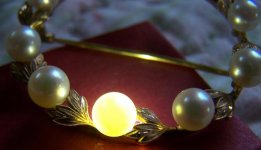

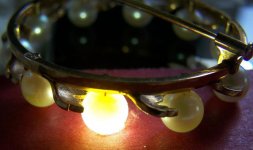
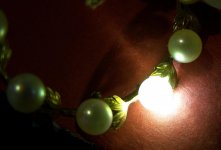
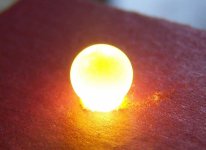
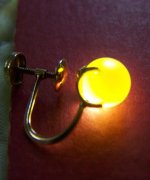
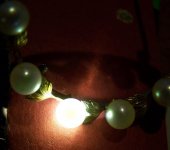
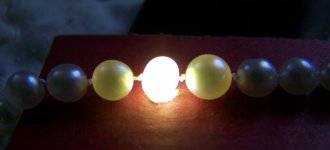
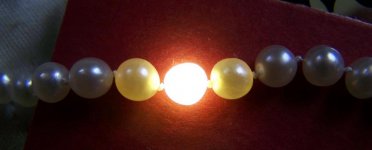
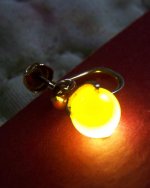
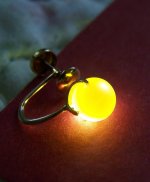

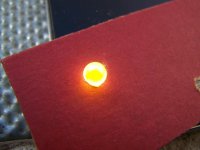
I took some more pictures and sending them along. I have images from one pearl earring and also from a pearl brooch as well as some more photos of the loose pearls and some from my strand of pearls.
I have been researching gem labs I can send my strand of pearls off to. I think GIA in New York City looks good from what I have been able to find out so far. I would be interested in hearing any thoughts anyone has about GIA; are they the right outfit to send pearls to?
I called our local jeweler here on Martha's Vineyard and got advice about how to ship the pearls, shipping insurance, etc.. But it occurred to me that I still need to insure the pearls (I don't have a homeowners policy) and wondered how I can do that if I don't know what the value of the pearls are? This feels like a catch-22, I need the GIA certification to get them appraised, no? I'm sure there must be something I'm missing here. I would be grateful for any advice. Thank you.













Lagoon Island Pearls
Well-known member
- Joined
- Dec 8, 2009
- Messages
- 2,142
I took some more pictures and sending them along. I have images from one pearl earring and also from a pearl brooch as well as some more photos of the loose pearls and some from my strand of pearls.
The views are much closer. thank you. Except for the strand, I'm seeing uniform brightness and the absence of inclusions. These are are likely bead nucleated. The brooch definitely, singles probably, earrings perhaps. However, the back lighting is too bright in general. I don't enjoy sending you back to the drawing board, but one more session will really get us closer to the best possible views. Try the next round using a smaller hole. This way, we'll be able to see contrasts more clearly. Use only as much as necessary to capture a clear view.
The lighted images from the strand do not appear to have beads, however the stray light into the one's beside show some bead cultured characteristics, but not conclusively.
Again, good work so far!
I need some advice as to how I should think about valuing my strand of pearls for insurance/shipping purposes; I'm going to send them to GIA in New York City to finally get them x-rayed. A couple of weeks ago I sent an email to your admin asking for various advice on this subject. I just got an email answer yesterday and it was suggested that pix that I posted here might be able to help get to some reasonable valuation.
I would appreciate any and all thoughts.
Thank you.
I would appreciate any and all thoughts.
Thank you.
Rather than taking more pictures I finally decided to send my pearls off to GIA in New York City. I spoke with their lab and they told me it would be about a week. Going into week two now and they're still working on it, maybe they are backlogged or something but I'm wondering, should it take longer than a week for them to do their assessment?
GemGeek
Pearlista
Sometimes they like to have more experts examine the pearls or do extra tests. This is for your benefit. Or they could be experiencing a surge in submissions. Don't worry! If it were me, I would be anxious to finally get confirmation on my pearls. 
Katbran
Well-known member
I love the story of your mom giving you the pearls wearing such a serious face..they were obviously very important to her. I wish you the best of luck with your GIA evaluation.
Similar threads
- Replies
- 14
- Views
- 3K
- Replies
- 8
- Views
- 278
- Replies
- 4
- Views
- 1K

